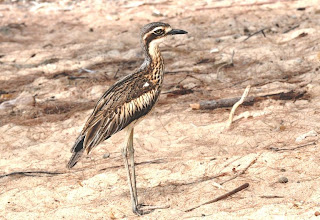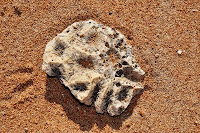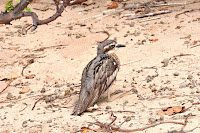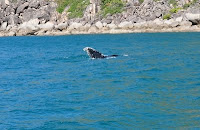The Kingfisher Theory - Part 3
 It was my turn to get the paper. As I drove I tried to ignore the bird on the telephone wire. I tried to believe that it was a mistake – but it wasn’t. I tried to believe that I had slept in and that it was the afternoon – but I hadn’t. It was a kingfisher, it was the morning and The Theory was in ruins. I could not even take sanctuary in the old adage that “it’s exceptions that prove the rule” – because they don’t. It’s basic science that exceptions disprove rules. Exceptions no more prove rules than internal belief makes things true in the outside world. The kingfisher was not there on the way back, and neither was The Theory. It was back on the drawing board, and a theory that says “kingfishers only sit on the telephone wires in the afternoons (except on Thursdays)” does not really have the feeling of elegant symmetry that good theories often have. I was so distressed that I had an extra piece of toast when I got home. And another cup of tea.
It was my turn to get the paper. As I drove I tried to ignore the bird on the telephone wire. I tried to believe that it was a mistake – but it wasn’t. I tried to believe that I had slept in and that it was the afternoon – but I hadn’t. It was a kingfisher, it was the morning and The Theory was in ruins. I could not even take sanctuary in the old adage that “it’s exceptions that prove the rule” – because they don’t. It’s basic science that exceptions disprove rules. Exceptions no more prove rules than internal belief makes things true in the outside world. The kingfisher was not there on the way back, and neither was The Theory. It was back on the drawing board, and a theory that says “kingfishers only sit on the telephone wires in the afternoons (except on Thursdays)” does not really have the feeling of elegant symmetry that good theories often have. I was so distressed that I had an extra piece of toast when I got home. And another cup of tea.
We drove past the wires again on the way to find our boat. I could hardly bring myself to look, but I did. There were Fig Birds, there were White Fronted Woodswallows, and Bee-eaters, but no kingfishers. I tried to forget about The Kingfisher Theory for a while, but even though it had only been dead an hour or so I really missed it.

We were greeted at the dock by a Rock Wallaby and a Brahminy Kite. They were both studiously ignoring us and each other. Our boat was still on land, although Cliff the owner, and our guide for the day, was just about to manoeuvre it into the water. The boat looked like a WWII landing craft, complete with drop front and vertical sides, although it lacked a machine gun, and it was most certainly not camo green or battleship grey. If you are not able to visualise the kind of vessel I am describing, think of a shoe box with the front, narrow section able to be moved up and down at will. That’s about it. It had a shallow draft that could float over coral reefs that would have been shredding other boats and was able to land us on beaches that other boats could not get into. Its boxy construction gave it a ride that was more percussive than comfortable, but what it lacked in grace it made up for in practicality. It had the sweeping lines and elegance of a house brick, but Cliff, who had built the boat in his back yard, clearly loved his boat. In the end we felt that way too.



Within minutes of leaving the harbour H had taken control of the helm. He would remain more or less glued into this position for the majority of the trip. This did cause a degree of consternation as all his previous driving experience had been gained on the computer and had almost inevitably ended in fiery disaster. Not today though. Our vessel plugged through the water with surprising speed. The coast slid past and birds of prey – osprey, kite and eagle – drifted overhead. As we round one bay we find a large egg shaped rock perched on a headland. There is a little window to the other side of the bay at its base. Sprawled across the top of the stone is a White Bellied Sea Eagle’s nest. A nest on an egg, rather than an egg in a nest. But we don’t see any eagles here. Later in the week we find another nest in the same bay – so maybe this nest has been abandoned, with the birds moving into a more desirable treetop house. On the boat the depth finder pings happily, but starts to squawk in distress as we approach a coral reef.


 Like the ones near the shore, these reefs do not give the crystal clear BBC Wildlife Unit views. The rippled water and reef combined to give a feel of what was under there, rather than a full view. It was like looking at a naturally occurring impressionist painting. No blocky colours or straight lines, but hints of depth and contour. Splashes of colour that you knew were near the surface without ever really knowing how you could tell. The depth sounder was near to psychiatric breakdown. We got into our wet suits, which is a process so lacking in any elegance that I refuse to describe it. Just let it be said that was a process that was richer in humour than it was in grace.
Like the ones near the shore, these reefs do not give the crystal clear BBC Wildlife Unit views. The rippled water and reef combined to give a feel of what was under there, rather than a full view. It was like looking at a naturally occurring impressionist painting. No blocky colours or straight lines, but hints of depth and contour. Splashes of colour that you knew were near the surface without ever really knowing how you could tell. The depth sounder was near to psychiatric breakdown. We got into our wet suits, which is a process so lacking in any elegance that I refuse to describe it. Just let it be said that was a process that was richer in humour than it was in grace.


 The kids soon got cold, but we stayed in the water longer, watching. Sharp edges and rounded, fluted pillars. Fish, coloured darts of energy and sheen, flash past and hide under ledges, dive into tiny caves or disappear into the distance. Around towers of coral – bommies – the fish gathered in greater numbers. They were bigger too. I chose to ignore the magnifying effects of the face mask and enjoyed the scale of the fish, close by or suddenly distant. Waves broke over the pillars and bounced us around – living flotsam, wave washed and, for a few seconds, at the mercy of the sea’s own rhythm. But the wet suits are buoyant and we were in no danger, however it was strange to feel yourself being picked up and put down. It was rather splendid really – and I should remember that when my kids ask me to lift them up, to spin them like tops. It’s a brief second when you break free of the pull of gravity and fly, a brief second when the constraints of the normal give way to the reality of dreams. Swimming in places like this really does feel like flying. We are spun back on to the boat, with a kick of the feet and a twist of the arms. Water drip drops from our noses and ears. We smile and ignore the faint chill of the wind. The kids laugh at their parent seals and the boat moves on.
The kids soon got cold, but we stayed in the water longer, watching. Sharp edges and rounded, fluted pillars. Fish, coloured darts of energy and sheen, flash past and hide under ledges, dive into tiny caves or disappear into the distance. Around towers of coral – bommies – the fish gathered in greater numbers. They were bigger too. I chose to ignore the magnifying effects of the face mask and enjoyed the scale of the fish, close by or suddenly distant. Waves broke over the pillars and bounced us around – living flotsam, wave washed and, for a few seconds, at the mercy of the sea’s own rhythm. But the wet suits are buoyant and we were in no danger, however it was strange to feel yourself being picked up and put down. It was rather splendid really – and I should remember that when my kids ask me to lift them up, to spin them like tops. It’s a brief second when you break free of the pull of gravity and fly, a brief second when the constraints of the normal give way to the reality of dreams. Swimming in places like this really does feel like flying. We are spun back on to the boat, with a kick of the feet and a twist of the arms. Water drip drops from our noses and ears. We smile and ignore the faint chill of the wind. The kids laugh at their parent seals and the boat moves on.
The ocean is large and our boat so small. Even with the shore in view you could feel the space around you. Something happens to scale and distance on the sea – the near recedes and far can rush up with unexpected haste. All sights are good fortune, encountered on a vague path that may never be taken again. You cannot place things, judging distance is hard and a shape on the water may just be the wind and waves, or it may be, sometimes, something else.


 A green dust-bin lid turns into a turtle swimming past. It’s going one way and we’re going the other. The vectors combine to make it pass by in the twinkle of an eye. It’s just a fleeting glimpse really, but it’s a highlight. This was not the torchlight procession to a breeding beach, but a chance collision between the watched and the transient. Such encounters have the feel of a found object. An item of chance that could have easily been missed and passed over.
A green dust-bin lid turns into a turtle swimming past. It’s going one way and we’re going the other. The vectors combine to make it pass by in the twinkle of an eye. It’s just a fleeting glimpse really, but it’s a highlight. This was not the torchlight procession to a breeding beach, but a chance collision between the watched and the transient. Such encounters have the feel of a found object. An item of chance that could have easily been missed and passed over.


 At first glance the beach seems empty expect for a line of old footprints that were slowly being washed away. The boat was anchored both ways, one against the pull of the tide, the other against the push of the wind. We walk the tide line in search of shells and recent treasure. P finds shell after shell, sea bright and damp. H finds stones and rocks with familiar shapes that only he sees.
At first glance the beach seems empty expect for a line of old footprints that were slowly being washed away. The boat was anchored both ways, one against the pull of the tide, the other against the push of the wind. We walk the tide line in search of shells and recent treasure. P finds shell after shell, sea bright and damp. H finds stones and rocks with familiar shapes that only he sees.



On the edge of the beach, where the sand meets the trees, Bush Stone Curlews run and hide – confident in the camouflage they carry. Sitting on reverse bent knees, relying on their cryptic nature they stare with wide eyes. One of the birds seems much redder than the other, but they allow me to get close before they rush off and hide again. Behind the beach the trees hold a flock of Red-Tailed Black Cockatoos. Huge birds with crests that rise and flatten with the bird’s mood. They sit and watch – sometimes reaching out for a seed pod which they shred with practiced ease. Standing still and listening for the falling of broken pods is the best way to find new birds. Eventually they seemed to have had enough of me and my cameras and as one they lifted off and flew inland. How did they do that? What was communicated?



We pull up the shore-side anchor and pull the boat out to sea on the other line. It feels like the boat is stationary and the land is moving. Waves slap on the flat sides and bottom of the boat. The water deepens. In the distance a shape moves in the water – and we all look in the same direction. The shape reappears, dark and sleek. I think I know what it is, but it should not be here yet. Then a large fluke tail fans up from the surface and we are left in no doubt. It’s a whale. Then it becomes two whales – which we take to be a mother and calf. They disappear for a few seconds that feel like disappointing minutes, then they surface much closer to us. Then closer still. This does not seem like a collision between an interested observer and a disinterested other – it feels like we are both checking each other out. The whales move between the shore and us and then vanish again. When they break back to the surface they are only 10’s of meters away. They swim towards us. Eventually I can no longer focus on the whale with my longer lens. How can it be possible to need a wide angle lens to photograph whales! Then in a perfect recreation of the “we’re going to need a bigger boat” scene from Jaws, both of the whales swim under the boat. The mother’s fluke heaps water up at the surface as she dives, the calf close by her side. The whales move away from us, up the coast, and we stand almost speechless – my kids aren’t speechless, they never are; but at least, for a short time, they seem a little quieter than normal. I’m reluctant to leave, but there’s no reason to stay. The whales have moved on, going up the coast to wherever they were going before they came over to check us out.



The coast line changes in a flash as we move from one geology to another – a vertical cut in the shore marking the place where we move from one age to another. How long has it taken for this change to make its way to the surface and show in the land? I can’t help but think about the size of the sea and the age of the Earth. Both huge beyond real comprehension, but understandable nonetheless. Numbers on this scale seem so unobtainable, and push us towards thinking that measures the world only in human scale. This seems to be a mistake. I wonder if the whales consider their migration trips to be long (assuming that they even have an idea of “long”) and I come to think that they would not. It would be normal. Just because we tend to peak out at heights around 2m does not make things beyond that big – they are just not two metres. Encounters with animals of such scale, in a place of such size, can make you think like this.
But the day was not over yet. On the long run back to dock – H firmly back at the the helm after P had led us a merry, fluid dance – there was another shape in the water. A brief shape, with a huge head and no dorsal fin. There was a brief glimpse of tail and it was gone – I think it was a dugong! I can’t be sure, but I don’t really care. We are not looking at “beyond all reasonable doubt” here. I think I know what it was, and on a day like this one it seems more likely than not that it was.
But the day was not over yet. On the long run back to dock – H firmly back at the the helm after P had led us a merry, fluid dance – there was another shape in the water. A brief shape, with a huge head and no dorsal fin. There was a brief glimpse of tail and it was gone – I think it was a dugong! I can’t be sure, but I don’t really care. We are not looking at “beyond all reasonable doubt” here. I think I know what it was, and on a day like this one it seems more likely than not that it was.


 We pull into the road that will lead to our house. There are kingfishers on the wires and I remember The Theory. And I remember that it no longer works. They are gathering on a leafless tree and bathing in a bath! The bath is probably a horse trough now, but it really was a bath, complete with taps. The light has faded, and the photographs don’t flow. In the end I give up and just watch. Blue flashes from branch to water. Feather flicking and preening on the fence. The Kingfisher Theory is dead, but the kingfishers are alive and well, and at the end of a day full of surprises I realise that I don’t really mind at all.
We pull into the road that will lead to our house. There are kingfishers on the wires and I remember The Theory. And I remember that it no longer works. They are gathering on a leafless tree and bathing in a bath! The bath is probably a horse trough now, but it really was a bath, complete with taps. The light has faded, and the photographs don’t flow. In the end I give up and just watch. Blue flashes from branch to water. Feather flicking and preening on the fence. The Kingfisher Theory is dead, but the kingfishers are alive and well, and at the end of a day full of surprises I realise that I don’t really mind at all.






Comments
Thanks for your comment on my blog. I have not been able to get out to see if there are any out of place birds, unfortunately and nothing new has showed up in my yard. While I am doing fine, the hurricane/tropical storm has been quite devastating for some with much inland flooding, especially in the state of Vermont. The death toll for the whole storm keeps rising and is currently up to 44 souls, and while that is minuscule compared to Katrina, it is still hard to hear. Many, many people are still without water or power and many more have lost everything in the floods. 260 roads have been washed out in the state of Vermont alone and people are stranded on mountaintops with no way to get off. It is sad and devastating to see the destruction of these floods. In the end, it was the flooding that caused the most damage. Thank you for visiting my blog and for your kind comments.
I love everything about this post -- family, whales, dugongs (I'm sure it was!), birds, every single thing. I got a kick out of your son piloting the boat and sure am glad he didn't crash and burn ;>)
And the kingfisher at the end was just a perfect wrapup to a perfect day.
Happy Days